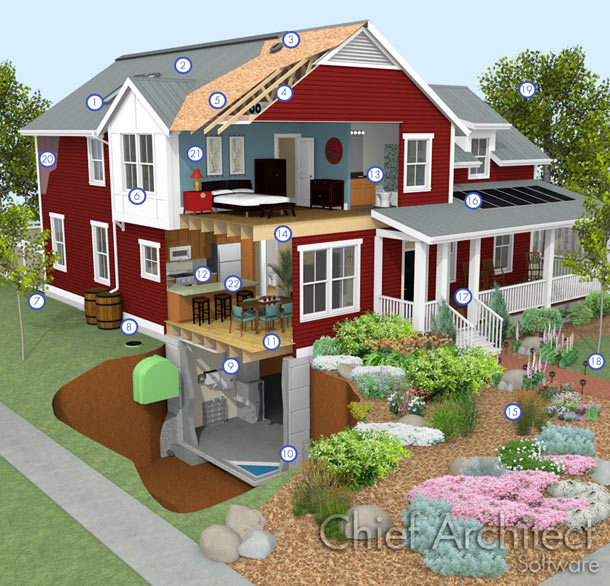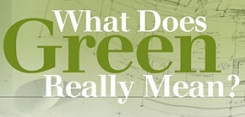Chief Architect is proud to be a green company and provide these resources for green building and design. Chief Architect's physical products and printed manuals are all digital (backup media and printed manuals can be ordered separately). When you download our software, there is zero usage of packaging or the services used to create, deliver, and dispose of the packaging — a win‑win for our environment.
We invite you to explore, in Chief Architect's software and on our website, resources and content for learning more about the green building and design process. We hope you will find information that will help you be more green for your next design!
Cross-reference the image markers with the list below for suggestions and descriptions of green building techniques. Follow the links for more information on a specific topic.







